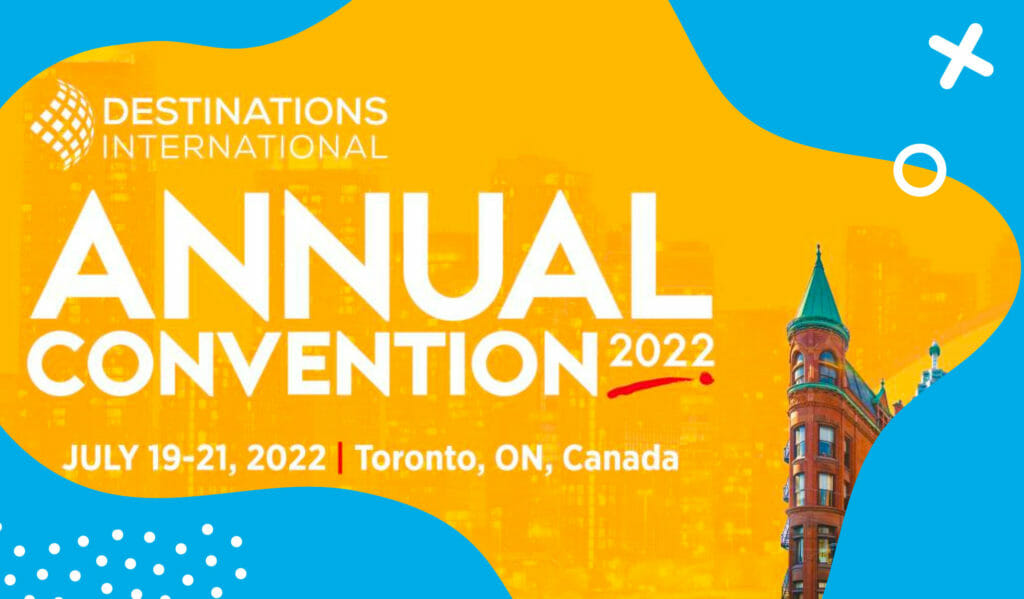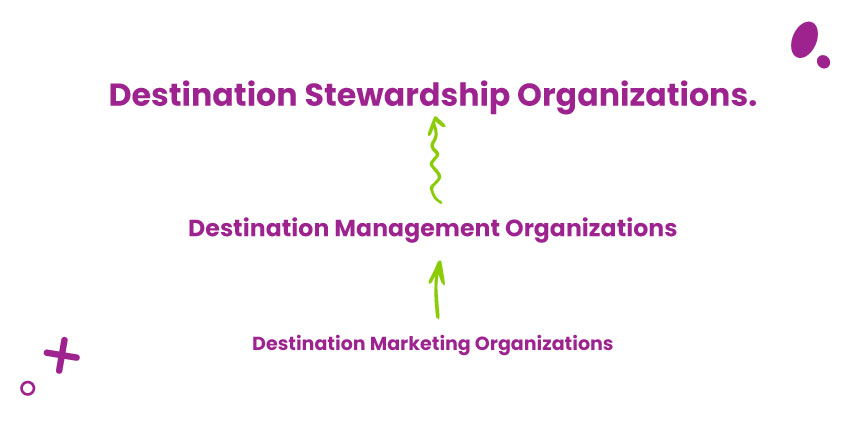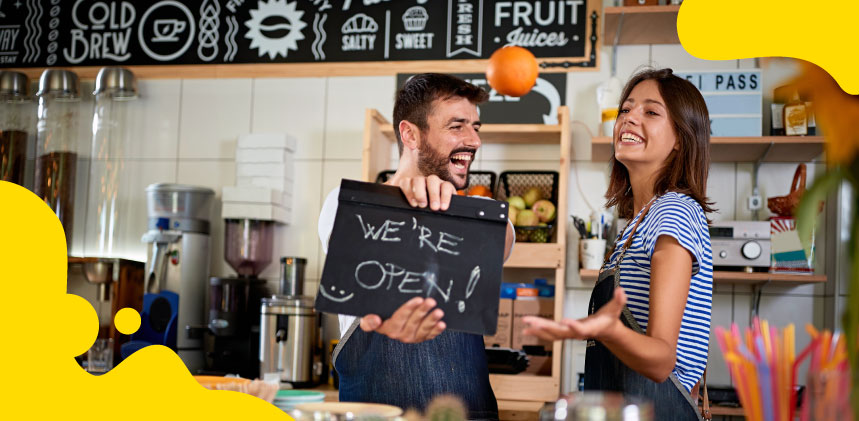Get to them …
- The roles of destination organizations are shifting … as are the nomenclatures.
- Your city’s multiculturalism impacts plans. Find your storytellers.
- There is room for a new model for destination organizations when it comes to sustainable tourism.
- There’s no blueprint for every destination. Organizations are heading towards a future of open-source solutions.
- It’s not just rates, dates and specs. Travel and the weaponization of travel are impacting future RFPs and increasing RFIs.
- Regarding accessibility and inclusivity, planners are looking for places that walk their talk.
For Digital Edge, the latter half of 2022 started with a refreshing splash of cold Canadian water to the face – straight from Toronto. As Destinations International’s 2022 Annual Convention set up in The 6ix this past July, our agency joined along as Premier Partners, presenters and attendees of the convention (some of us as first-time attendees). In between the ceremonious start and end, takeaways were snatched up, action plans were inspired, and minds were awakened.
During Annual, our Co-Founder, Mya Surrency, co-presented and led several sessions. Her topics on sustainable tourism, brand extension and image & video asset acquisition were accompanied by additional hot topics buzzing throughout the convention:
- Destination Organizations of the Future & Destination Stewardship
- Planner Influence from Social & Political Awareness
- The Weaponization of Travel
- EDI & Accessibility at the Destination Level
Here are the top takeaways and action-starters for your DMO that we gathered from our time in Toronto.
1. The roles of destination organizations are shifting … as are the nomenclatures.
What felt like a moment in time for many became the most consequential shifter for our industry. During the onset of the pandemic, marketing felt like anything but, and for many organizations, it was.
Today, many destination organizations are re-evaluating their mission statements and identifiers and revising them to include more comprehensive descriptions of their new roles. Identifiers like:
- Community builders
- Economic & workforce developers
- Destination stewards
- Sustainability keepers
- DEI leaders
Consequently, a shift is happening from Destination Marketing Organizations to Destination Management Organizations. And ultimately, Destination Stewardship Organizations.
Although, “… A rose by any other name would smell just as sweet,” right? It matters what your organization does, right? Well, how you define your organization reflects what and who are at the heart of it. Owning these roles and descriptors has become common practice in showcasing your value to the community and all who visit your destination.
2. Your city’s multiculturalism impacts plans. Find your storytellers.
One session, The Multicultural Multiplier: Cultural Diversity’s Impact on Travel Intent, discussed insights from iolite group’s study on how multicultural marketing impacts travelers. This session was brought together by Miles Partnership, Brand USA and iolite group – yep! The proper lowercase noun is intentional.
The main takeaway: destination locals and members of your organization aren’t just your Old Faithfuls; they’re reflective of all pockets and areas within your destination.
They’re built-in content creators – right in your backyard.
- Brainstorm with your team on ways to help them be the storytellers.
- Planning professionals want to know about your city’s vendor and supplier diversity, community connectors, support for small, often minority-owned businesses, multicultural offerings and stories. …
- … Tell them.
3. There is room for a new model for destination organizations when it comes to sustainable tourism.
- This session, Accelerating Climate Action in Tourism, was moderated by Rory Archibald from Visit Scotland – Visit Scotland played a critical role in drafting the Glasgow Declaration calling for increased urgency in accelerating climate action in tourism – and included panelists from Gulf Shores, Alabama, Niagara Escarpment for Sustainable Travel and Global Destination Sustainability Movement.One overarching point in this session was that many organizations don’t know what’s expected of them and how to get there. They’re responsible for branding, marketing and bringing sustainable business to their destinations. Organizations must transition into a destination management mindset to successfully tackle these responsibilities.Some points of consideration:
- Encourage visitors to act in ways that benefit the planet.
- Create a program to focus destination work on a code of ethics for sustainable travel. The Global Destination Sustainability Index is a resource that can help you identify these areas.
- As leading organizations in your community, look into the different accreditation opportunities for your team of leaders.
- Show how you know what you’re talking about. When you do, ditch the scientific jargon – your clients won’t understand it, and it more than likely won’t resonate.
- Aim to avoid “greenwashing” – DMOs have to be transparent and honest about their goals, what they’re doing and what they’d like to do.
4. There’s no blueprint for every destination. Destination organizations are heading towards a future of open-source solutions.
This session, The Destination Organization of the Future, can be paraphrased with some solid bullet points straight from our client, LA Tourism & Convention Board, along with panelists from Group NAO, Coraggio Group, Destination Canada and Netherlands Board of Tourism & Conventions.
- Aim to stop pushing for visitor numbers. Operate within sustainability goals and take communities into account.
- Focus on resilience. How do you prepare for future shocks? What if they don’t come one at a time?
- Be responsive to change and agile to the multiple interruptions you’ll face.
Priorities beyond destination marketing:
- Instill a sense of urgency in your organization and with stakeholders – lean into issues.
- Think local from your perspective – like homelessness; while unavoidable, your organization must contribute to the solution.
- Make sure you’re thinking about the community at large. What do they want to showcase to the outside world?
- Be a thought leader and get everyone on board – stakeholders, partners and local and federal government. It takes participation at all levels.
- Be bold in your leadership.
It’s not just about heads in beds…
- Community and values within come first.
- What’s good for residents is good for visitors, but the reverse isn’t always true.
- KPIs are adjusting and moving toward DEI and sustainability.
- Come up with new profiles for travelers that you want to visit your destination – those who are interested in community, experiences, etc.
5. It’s not just rates, dates and specs. Travel and the weaponization of travel are impacting future RFPs and increasing RFIs.
Panelists from Brad Weaber Consulting Group, Global Meetings & Tourism Specialists, RealSelf and Blavity, Inc. brought us an eye-opening discussion on How Travel and the Weaponization of Travel are Impacting the RFP of the Future. Overall, the term RFI (request for information) is coming up more and more. Key pieces of information are being requested by planners – like:
- How many Black-owned local businesses does a destination engage with?
- How many STEM schools are in the destination?
- What’s currently happening in your city (protests, safety concerns, mask mandates, etc.)?
While planning professionals aren’t necessarily sending a separate RFP, they’re including a list of needs in the RFP itself. Planners have to be the experts and advocates for their stakeholders and need new and updated information on destinations to see if they match priorities. And today, transparency from destinations is not only needed, it’s expected.
6. Regarding accessibility and inclusivity, planners are looking for places that walk their talk.
This session, Focusing on Accessibility at the Destination Level, showcased two pioneering destinations that are creating new opportunities for travelers and attendees: Visit Mesa and Greater Lansing. The two panelists went through best practices and specific examples that DMOs can do now to affect immediate and long-term change in a destination. It was as educational as it was inspiring, and we jotted down some of the ‘low-hanging fruit’ to relay a handful of low-cost solutions for your DMO.
- Create a microsite rich with dynamic information on accessibility. Many organizations, admittedly, provide this after the fact, but it doesn’t need to look that way.
- Create landing pages that show what you are portraying about accessible travel. Put this in the main navigation and don’t make readers search hard.
- Create specific itineraries for those in your group with autism, low mobility, sensory needs, etc.
- Perform partner surveys on their accessibility initiatives. You will need to audit and update, but the long-term benefits are worth the effort!
- Do a physical audit of your destination and the different meeting spaces. Realize that this is more than just wheelchair access. Check the tension on doors, the height of kiosks, etc.
Creating these opportunities benefits anyone and everyone – those in your group with different abilities (seen and unseen). It able-izes your city as a whole, enables attendees to enjoy business travel and allows your organization to be a steward of your destination.
All in all…
There’s a lot of work to be done. And we help destination organizations with a lot of it. Reach out to us – it’s why we’re here.










